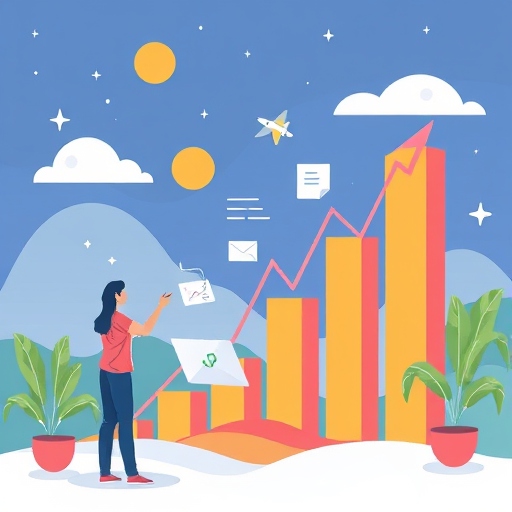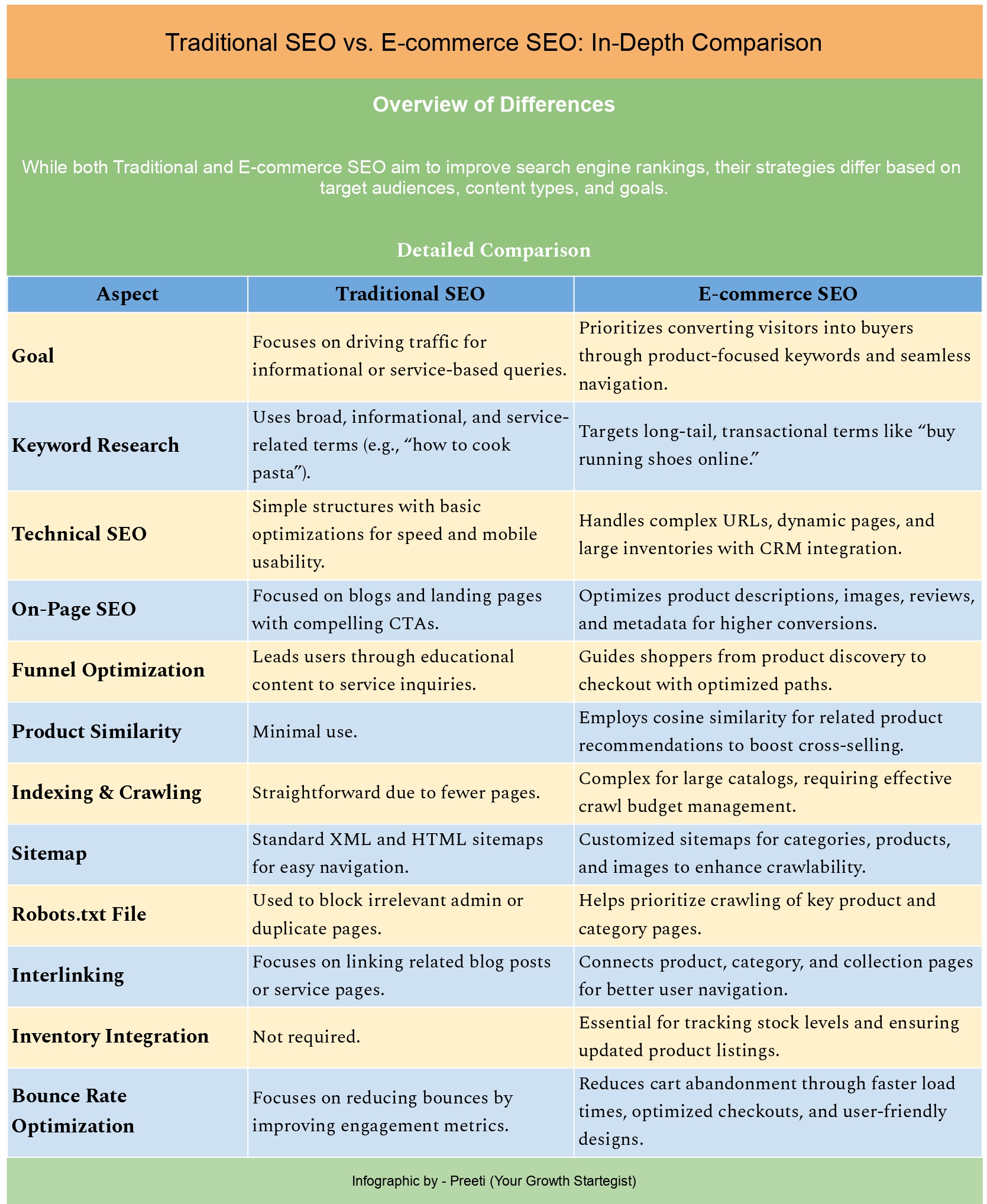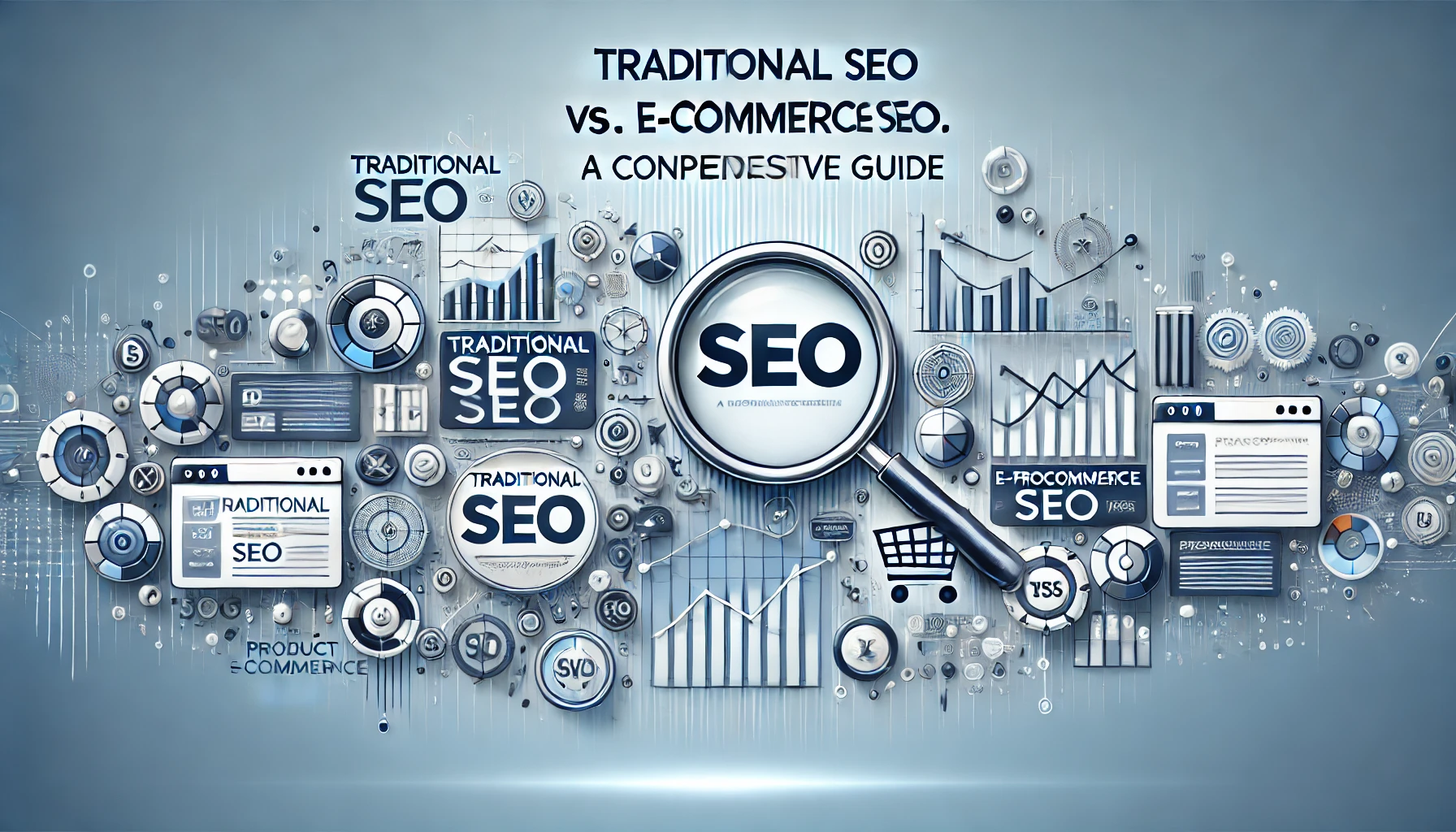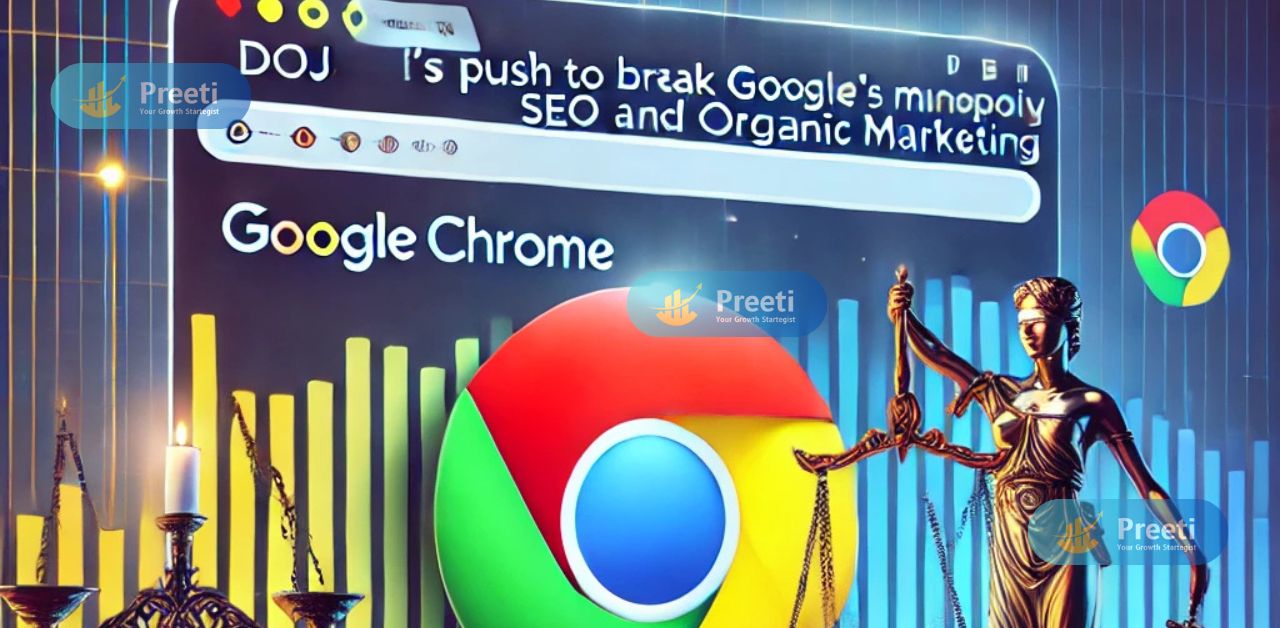Search Engine Optimization (SEO) is the art and science of enhancing a website’s visibility on search engines such as Google, Bing, and Yahoo. It is a comprehensive strategy aimed at improving a website’s rankings on search engine results pages (SERPs), driving organic traffic, and ultimately converting visitors into customers. SEO achieves these goals by optimizing various elements of a website, including its content, structure, design, and technical framework.
At its core, SEO bridges the gap between businesses and their audience by ensuring that relevant and high-quality content is discoverable when users search for specific keywords or topics. This process involves understanding the algorithms that search engines use to rank pages, as well as staying ahead of frequent updates and changes in those algorithms.
SEO is not just about search engines; it’s equally about creating an engaging and seamless user experience. It integrates various tactics, such as keyword research, on-page and off-page optimization, backlink building, mobile responsiveness, and page speed enhancements, to ensure that a website meets both search engine and user expectations.
SEO has transformed how businesses engage with their audience, driving measurable growth through enhanced visibility, targeted traffic, and improved conversions. Statistics reveal that 53% of website traffic originates from organic search (BrightEdge), underscoring its role as the top driver of digital engagement. Companies prioritizing SEO enjoy higher close rates, with organic leads converting at 14.6% compared to 1.7% for outbound methods (Search Engine Journal). Case studies like Airbnb showcase its impact, where optimized local search terms and user-generated content significantly increased organic traffic and bookings. Similarly, small businesses have used SEO to level the playing field, capturing untapped audiences with focused strategies like content marketing and keyword optimization.
While SEO broadly focuses on improving visibility, it bifurcates into traditional SEO and e-commerce SEO, each tailored to specific goals.
- Traditional SEO: Primarily focuses on content-driven websites such as blogs, informational portals, or service websites.
- E-commerce SEO: Tailored specifically for online stores and platforms selling products.
While traditional and e-commerce SEO share foundational principles, the goals, strategies, and execution vastly differ. Let’s delve deeper to explore their nuances.
Importance of SEO for Business Growth

Whether you are starting your own blog or an e-commerce store, SEO is the foundation of sustainable growth online. Here’s why every business should prioritize it:
- Cost-Effective Traffic Generation:
Organic traffic is more affordable and reliable than paid advertising in the long term. - Improved Credibility:
A top-ranking website signals trust and authority to users. - Enhanced User Experience (UX):
SEO encourages clean, fast, and user-friendly website designs. - Higher Conversion Rates:
By targeting the right keywords and optimizing pages, SEO leads to better conversions.
Statistics to Consider:
- Websites on the first page of Google get 92% of all search traffic.
- 70% of marketers report that SEO is more effective than PPC for driving sales over the long term.
- According to a study by Ahrefs, 90.63% of web pages get no traffic from Google. This shows the immense value of effective SEO in putting your content in front of the right audience.
Additional Read:
- Google Removes Page Experience Report From Webmaster Tool
- DOJ Forces Google To Sell Chrome to Break Monopoly In Search Results
Traditional SEO vs. E-commerce SEO: Detailed Comparison
While Traditional SEO and E-commerce SEO share foundational principles, their application differs significantly based on the nature of the business and target audience. This section provides an in-depth technical comparison across multiple dimensions, emphasizing the nuances that make each approach unique.
1. Keyword Research
- Traditional SEO:
- Focuses on broad, informational, or service-related keywords.
- Keywords are typically generic, aiming to drive traffic to blogs or service pages (e.g., “best SEO practices,” “top marketing agencies”).
- Often employs local SEO for service-based businesses targeting specific locations.
- E-commerce SEO:
- Focuses on transactional and long-tail keywords designed to target users ready to purchase.
- Keywords include product-specific terms (e.g., “buy running shoes online,” “best 4K TVs under $500”).
- Heavy use of competitive analysis to uncover gaps in competitors’ product-focused keyword strategies.
2. Technical SEO
- Traditional SEO:
- Relatively straightforward; focuses on improving site speed, mobile responsiveness, and resolving basic technical issues.
- Crawlability is less complex due to smaller website structures.
- Minimal requirements for dynamic pages or advanced integrations.
- E-commerce SEO:
- Requires resolving issues with dynamic URLs caused by filtering, sorting, or product variations.
- Manages a larger crawl budget for extensive inventories.
- Integration with CRM systems for inventory tracking and user data synchronization.
- Handles duplicate content challenges stemming from product variations.
3. On-Page SEO
- Traditional SEO:
- Focuses on optimizing blogs, landing pages, and service pages.
- Requires compelling headings (H1, H2), meta tags, and call-to-action elements.
- Content strategy emphasizes keyword usage, readability, and relevance.
- E-commerce SEO:
- Requires optimization for product pages, including titles, descriptions, images, and reviews.
- Focuses on category pages (e.g., “Men’s Running Shoes”), optimizing content for keywords and internal linking.
- Employs techniques like cosine similarity for eCommerce websites to improve product recommendations, showing users items similar to what they’ve browsed or purchased.
4. Page Speed Optimization
- Traditional SEO:
- Requires fast loading for all devices, with a particular focus on mobile-first indexing.
- Site speed impacts bounce rates and user experience metrics.
- E-commerce SEO:
- Page speed is critical for both desktop and mobile, especially on checkout pages.
- Must optimize dynamic elements like product sliders, image carousels, and real-time stock updates without slowing load times.
5. Funnel Optimization
- Traditional SEO:
- Focuses on lead generation, guiding users from blogs to service or contact pages.
- Strategies involve informative content that nurtures visitors through the awareness and consideration stages.
- E-commerce SEO:
- The funnel is transaction-oriented, moving users from discovery to checkout.
- Involves optimizing category pages, product pages, and shopping carts to minimize friction.
- Resolves cart abandonment through features like guest checkout and faster page load times.
6. Interlinking Strategies
- Traditional SEO:
- Uses interlinking between blogs and service pages to distribute link equity and improve content discoverability.
- Focuses on topic clusters to build authority in niche areas.
- E-commerce SEO:
- Heavily relies on internal linking between related product pages, categories, and collections.
- Employs related products or “People Also Bought” sections to increase average order value (AOV).
7. Indexing & Crawling
- Traditional SEO:
- Simpler indexing requirements due to fewer pages.
- Basic XML sitemap submission suffices for search engine discovery.
- E-commerce SEO:
- Complex due to large catalogs and frequent updates to inventory.
- Requires advanced pagination strategies for product categories.
- Manages robots.txt to exclude low-value pages like filters or internal search results.
8. Sitemaps (XML & HTML)
- Traditional SEO:
- Standard XML and HTML sitemaps ensure search engines and users can navigate effectively.
- E-commerce SEO:
- Custom XML sitemaps for products, categories, and images improve crawlability.
- HTML sitemaps must account for complex hierarchies and thousands of product pages.
9. Inventory Integration
- Traditional SEO:
- Inventory tracking is typically unnecessary.
- E-commerce SEO:
- CRM integration for inventory ensures users see accurate stock levels, enhancing the shopping experience.
10. Bounce Rate & Engagement
- Traditional SEO:
- Focuses on reducing bounce rates through engaging content, clear navigation, and mobile optimization.
- E-commerce SEO:
- Prioritizes bounce rate reduction at key stages like product pages and checkout.
- Strategies include faster load times, detailed product descriptions, and transparent shipping information.

Download This Infographic Here.
Why Businesses Should Focus on SEO
Search Engine Optimization (SEO) has become a cornerstone of digital marketing, offering businesses a sustainable and cost-effective way to build their online presence. Here’s why SEO should be at the top of your marketing priorities:
-
Better Conversion Rates
SEO drives targeted traffic to your website, ensuring visitors who land on your pages are already interested in what you offer. Unlike paid ads or cold outreach, organic visitors often arrive with intent—whether to read, learn, or purchase. With strategic optimization, such as creating compelling calls-to-action (CTAs) and optimizing conversion-focused pages, businesses can significantly boost their conversion rates.
-
Brand Awareness
Appearing on the first page of search results for relevant and competitive keywords not only increases clicks but also builds brand credibility. Users tend to trust websites that rank higher on Google, associating them with quality and authority. Over time, consistent visibility in search results fosters recognition and trust, positioning your brand as a leader in your niche.
-
Adaptability to Trends
SEO isn’t static—it’s dynamic and evolves alongside changes in consumer behavior and search engine algorithms. By regularly monitoring trends, businesses can pivot their strategies to cater to new demands, ensuring they remain competitive. For example, optimizing for voice search or emerging long-tail keywords can help businesses capture new audiences as technology and behaviors shift.
-
Compete with Industry Leaders
Even small businesses can use SEO to challenge industry giants. Unlike traditional advertising, which often requires a significant budget, SEO levels the playing field by focusing on quality content, user experience, and relevance. A well-optimized website with a targeted content strategy can rank alongside—or even above—large competitors, capturing valuable market share.
Case Study: Nike’s E-commerce SEO Strategy
Nike has leveraged the power of e-commerce SEO to dominate the athletic wear market online. The company uses keyword-optimized product pages, robust interlinking strategies to connect related items, and a mobile-first approach to enhance user experience. By implementing structured data, Nike ensures its products appear in rich snippets, gaining higher click-through rates (CTR). As a result, Nike drives millions of organic visits monthly, showcasing how a meticulous SEO strategy can translate into massive growth.
Key Takeaways
SEO offers a wide range of benefits, but to harness its full potential, businesses must tailor their strategies to their unique goals and requirements.
1. Understand Your Goals
- Traditional SEO: Ideal for blogs, informational websites, and service-oriented businesses that aim to educate users or generate leads.
- E-commerce SEO: Designed for online stores, with a focus on product pages, collections, and the checkout process to drive sales and revenue. Knowing which type of SEO aligns with your business model is critical to success.
2. Invest in Technical SEO
Regardless of the type of SEO, technical optimization is a must. A clean, mobile-friendly site architecture, fast page load times, and proper crawling and indexing setup are foundational. Regular audits can ensure there are no bottlenecks preventing search engines from fully understanding and ranking your website.
3. Focus on the Buyer’s Journey
Whether your goal is to guide users through a blog post or to complete a purchase, the user experience must be seamless. From navigation to relevant CTAs, ensure that visitors can find what they’re looking for without confusion or friction. For e-commerce businesses, this means an intuitive checkout process; for traditional websites, it involves creating value-rich content that answers user queries.
4. Prioritize Long-Term Results
SEO is not an overnight success strategy. Building authority and organic traffic takes time, but the results are sustainable and long-lasting compared to paid advertising. Businesses that prioritize SEO as part of their long-term marketing strategy consistently see compounding returns on investment. Google upgrades its search algorithms and policies like they recently expanded their site reputation abuse policy, to enhance user experience on SERP.
Bottom Line
SEO is not a one-size-fits-all strategy. The distinction between traditional SEO and e-commerce SEO lies in their application and goals, making it essential to understand your business’s specific needs. By investing in the right SEO approach, businesses can harness the power of organic search to drive traffic, build trust, and establish themselves as industry leaders.
Whether you’re optimizing a blog for thought leadership or a product page for sales, the key is consistency, adaptability, and user-first thinking. As search engines evolve, so must your SEO strategy, ensuring your business remains visible and relevant in an ever-changing digital landscape.
Recommended Resources
- Google Search Console: Essential for tracking your website’s performance and resolving indexing issues.
- Moz’s Beginner’s Guide to SEO: A comprehensive resource for learning the basics of SEO.
- Neil Patel’s SEO Tools: Offers free tools for auditing your website and finding improvement opportunities.
FAQs: Traditional SEO vs. E-commerce SEO
1. What is the key difference between traditional SEO and e-commerce SEO?
Traditional SEO focuses on optimizing informational or service-based websites to rank for keywords and generate organic traffic. In contrast, e-commerce SEO is geared toward optimizing online stores, emphasizing product pages, category pages, and checkout processes to boost sales.
2. Why is technical SEO important for e-commerce websites?
E-commerce websites often have large product catalogs, dynamic URLs, and complex site structures. Technical SEO ensures these elements are optimized for fast loading times, proper indexing, and seamless user navigation, which directly impacts rankings and user experience.
3. Can small businesses benefit from e-commerce SEO?
Absolutely! Small businesses can leverage e-commerce SEO by focusing on niche products, local keywords, and long-tail phrases. This strategy helps them attract targeted audiences and compete with larger brands.
4. How does keyword research differ between the two SEO types?
Traditional SEO often targets broad or informational keywords to attract readers or leads, like “best gardening tips.” E-commerce SEO uses transactional keywords, such as “buy gardening tools online,” to capture users ready to make a purchase.
5. Why should businesses invest in SEO?
SEO drives long-term organic traffic, builds brand trust, and increases visibility on search engines. For e-commerce businesses, it also directly boosts revenue by ensuring products reach the right audience at the right time.







